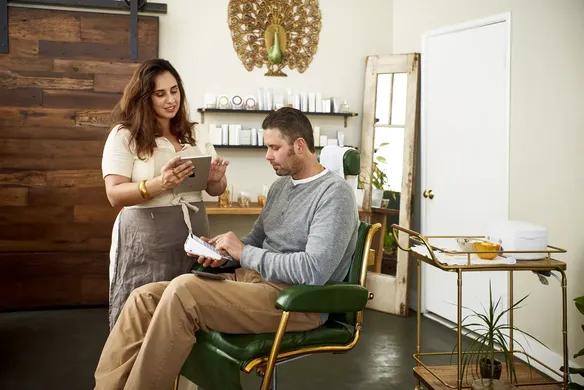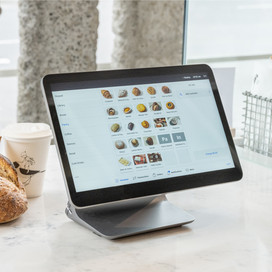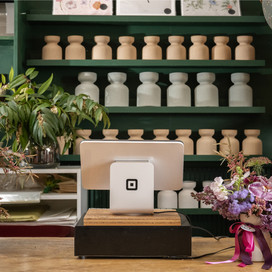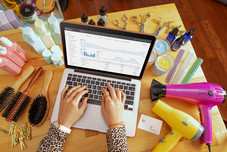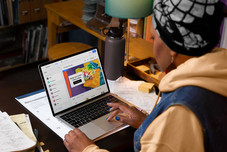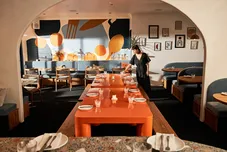Table of contents
Getting paid – it’s the ultimate goal of any and every business. But, while most small business owners will spend endless time and effort working out what to sell, what to charge and how to attract customers, the process of actually taking payment – getting money in return for the goods and services you provide – can almost turn into an afterthought.
In this article, we’ll be putting payments front and centre. We’ll discover the range of payment methods that your small business can offer, the technology and tools you’ll need to accept those payments and where these payment solutions fit within your broader business systems.
11 types of payment method
Payment is the act of transferring value, usually in the form of currency, from one party to another, in this case from the customer to the seller in return for goods and services. The payment method describes how that transfer of value occurs, and you might be surprised at how many methods there are.
Cash: The original payment method, notes and coins still have a place in modern commerce, although their use has been in steady decline for decades. Many small businesses have now chosen to go without, as managing a till can be a time-consuming exercise.
Credit/debit card: As the use of cash has declined, the use of cards – particularly in debit and EFTPOS form – has skyrocketed. Debit cards and credit cards now represent the most popular form of payment both online and offline, and every small business should have the ability to accept these payments.
Contactless payments: Magnetic strips are now all but defunct in Australia, and chips now serve as a backup to the main card payment method: contactless. Hover the card over the reader, listen for the beep and you’re good to go! The near-field communication (NFC) technology used in contactless cards can now be found in phones and smartwatches too, which means that wallets and purses may soon become redundant.
Online portal payments: Online shopping is exploding, and online portal payment technology is fuelling this growth. By accepting payment through your website, you can literally make sales in your sleep, as the entire process is automated!
Remote payments: Perfect for remote billing or taking payment over the phone, Square Virtual Terminal turns any computer into a piece of payment hardware. To accept a payment you simply get the customer’s card details and key them in.
Bank transfer: If you don’t ask for money upfront, and instead invoice your clients and allow them to pay within a certain number of days, you’ll commonly accept bank transfer payments, where money is moved directly from their account to yours.
Direct debit: Direct debit payments are automated and scheduled, with a certain amount of money withdrawn from an account on a regular basis, weekly, monthly or annually. You might be familiar with this form of payment through your Netflix subscription or phone bill.
BPAY: Bill Payment – BPAY to its friends – is the most popular way for Australians to pay their bills. It’s more or less a bank transfer with a few minor differences, such as automatically saving biller details. In order to accept this form of payment you need to become an authorised BPAY biller – a title generally reserved for large corporations like utility providers.
Buy now pay later (BNPL): A payment method popularised by Afterpay and adopted by many other companies, BNPL sees a purchase split into a number of smaller interest free payments (four in the case of Afterpay) that are automatically debited in the weeks following the purchase. An increasing number of retailers are now offering BNPL to their customers.
Cryptocurrency: It’s still difficult to tell whether businesses will be expected to accept payment via Bitcoin, Ethereum or other cryptocurrencies in the future, but some forward-thinking companies are already doing just that. With El Salvador listing Bitcoin as an official currency, and Sweden developing the eKrona, a crypto version of its native currency, the future may well reside in the blockchain.
Cheque: The humble cheque is all but dead in Australia, having been overtaken by the far more efficient, effective and secure payment methods listed above. That said, some B2B businesses and service providers may still be expected to accept payment via cheque.
How to start taking payments for your new business
Now that we have an understanding of the different forms of payment your business can take, it’s time to choose the ones that you’ll offer. This decision should be based on three main factors:
- The payment preferences of your customers: Your customers should be able to pay in the way they want, otherwise you risk missing out on sales.
- The payment practises of your vertical/industry: Retail businesses tend to take payment upfront via cash, card or contactless methods. B2B organisations tend to invoice for goods and services and take payment via bank transfer or credit card over the phone. You should aim to align your accepted payment methods with industry standards.
- Your own payment preferences: While meeting customer expectations and industry norms should form the basis of your decision, there’s still room for personal preference in which methods of payment you accept. Perhaps you’ll make the call to go cashless, for example.
To help guide your decision, let’s take a look at a few examples of small businesses, and the payment methods they’d commonly accept.
1. Payments for hair and beauty
As businesses that deal with lower value payments and individual consumers, hairdressers, beauty parlours and salons will need to be able to take card and contactless payments using hardware like the Square Reader, Terminal, Stand or Register. Cash also remains standard in this industry, at least for now. A hair and beauty business may be willing to generate a post-pay invoice for its most loyal customers, a process made easy with Square Invoices. A point of sale (POS) solution like Square Appointments can handle both bookings and payments, making business management far simpler.
2. Payments for retail
For the most part a retail business has the same payment needs as a hair and beauty business – cash is still relevant (although it’s becoming less so), and accepting card and contactless payments via your choice of Square Reader, Terminal, Stand or Register is a must. Invoicing and post-paying are less common in retail, although BNPL solutions like Afterpay offer an alternative. Square also offers a total POS solution for this industry: Square for Retail allows you to not only take payments but also manage inventory, sell online, track finances, build customer loyalty and more.
3. Payments for restaurants/cafes
Combining the service elements of a hair and beauty business with the production elements of a retail store, restaurants, cafes and other hospitality venues sit somewhere between the two above. This means that cash is still standard (but increasingly optional), that a Square Reader, Terminal, Stand or Register is needed to take a card and contactless payments, and that a complete POS solution like Square for Restaurants is a wise investment. Square for Restaurants accepts payments, takes orders (online and in-person), manages staff, creates gift cards and even offers a kitchen display system. Restaurants don’t tend to worry about invoicing unless they’re in the catering space.
4. Payments for professional services
If you offer professional services, your choice of the payment method will be driven by your customers and your industry. Because most small professional service providers don’t have a storefront, there’s no need to deal in cash or POS systems. If you provide B2C services you might choose to take mobile payments with Square Reader or remote payments with Square Virtual Terminal. If you’re in the B2B space you’ll more likely need to offer post-pay terms, which you can do with the help of a tool like Square Invoices.
How Square’s ecosystem of products works together
No matter the size and shape of your business and the industry you find yourself in, Square’s complete range of payment and commerce solutions will make your business life easier, more exciting and more fun.
When Square was established in 2009, we had one product: a little white reader. But as customers told us about problems they needed to solve and opportunities they hoped to capitalise on, our range of hardware and software solutions began to expand.
We’ve since created an entire ecosystem of tools that cover every aspect of commerce and business management. The best thing about this ecosystem is that everything clicks together like Lego blocks – you can combine any number of Square tools to create a bespoke business management solution that meets your exact needs.
Square tools are ultra-affordable, which means that any small business is now granted access to market-leading payment and business management technology. Our software solutions are also scalable, growing in line with your business. No matter how many stores, employees or angel investors your business ends up with, you can feel safe in the knowledge that your business systems will keep pace. In fact, Square is the provider of choice for many large, enterprise-scale businesses with complex commerce operations.
If you find yourself at the very beginning of your business journey, one of your first jobs will be to set up payment methods. At Square, we aim to make this process as easy as possible, by granting you the ability to accept payments your way, and by reducing the setup of the required technology to just a handful of clicks.
If you’re ready to get paid in your new business venture, Square is ready to help.
![]()

